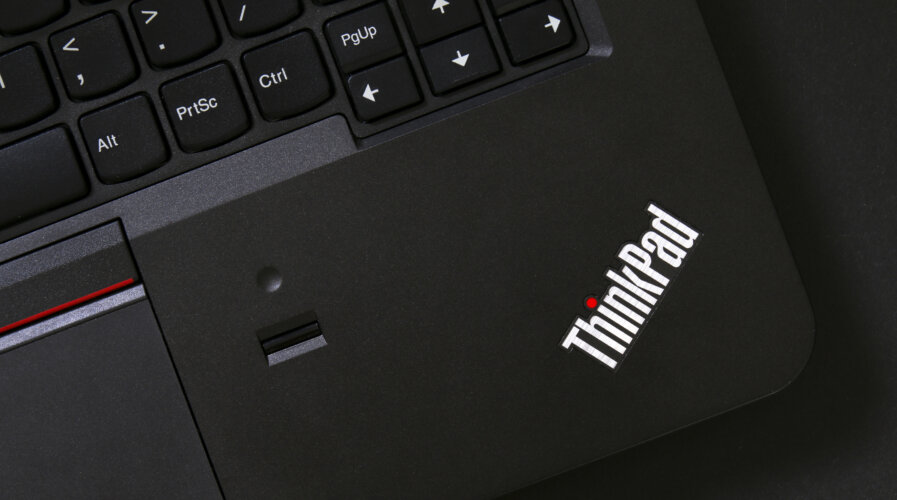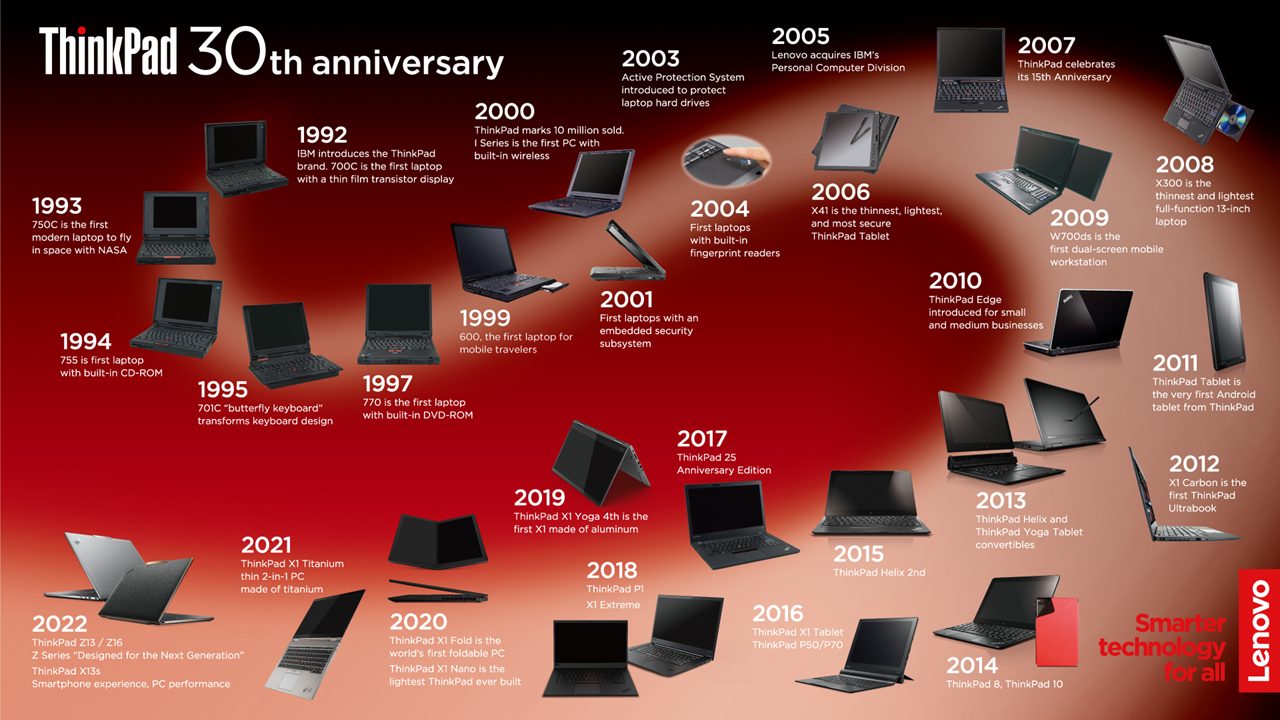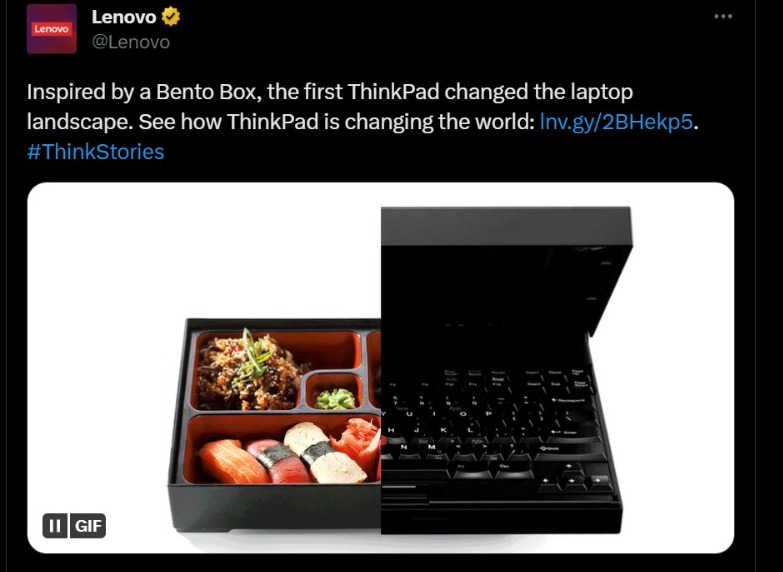
“ThinkPad as a successful design that stands the test of time,” Jerry Paradise, Vice President of Global Commercial & Product Management at Lenovo IDG, penned in a blog posting last year.
Lenovo: the evolution of ThinkPad in the era of sustainability
|
Getting your Trinity Audio player ready... |
- Kevin Beck, the Senior Story Technologist at Lenovo, shared with Tech Wire Asia the hows and whys of the company’s design and sustainability approach through devices like X1 and ThinkPad Yoga.
The ThinkPad debuted in 1992, at which time the ThinkPad 700 was the first real portable computing product. Though it began life at IBM, by 2005, Lenovo bought the PC business and continued to evolve the line. More than three decades later, Lenovo stands as the world’s largest PC vendor, and its ThinkPad stands out in the crowded market – with a myriad of series ranging from the famous X1 line to the Yoga Series.
The ThinkPad has especially gained severe traction in enterprise sales. As of 2022, on its 30th anniversary, there have been 200 million units of ThinkPads sold, according to Lenovo. “ThinkPad is a successful design that stands the test of time,” Jerry Paradise, Vice President of Global Commercial & Product Management at Lenovo IDG, wrote in a blog post last year.

Lenovo has sold over 200 million units of ThinkPad over the last three decades. Source: Lenovo
As one of the oldest commercial laptop brands in the world, ThinkPad’s iconic design, with its charcoal tone and discrete sections optimized for various computing tasks, came from a Japanese Bento box – a square container with multiple mini-boxes inside to hold different types of food.
The Bento box concept of portable computing changed the world, illustrating how spatial design principles could map onto industrial enhancements that have yielded successively thinner, lighter, and less power-hungry devices. Each Lenovo product goes through years of arduous conceptualization, research, design, sourcing of raw materials, and manufacturing before it becomes a tangible innovation.
Lenovo has also been stretching the limits of innovation for an ethical and sustainable digital future — revolutionizing modern technology as a sustainability enabler, contrary to old-school notions. Recently, Tech Wire Asia spoke with Lenovo’s Senior Story Technologist, Kevin Beck, at the company’s US headquarters in Raleigh, North Carolina.
Besides touching on the history and future of the ThinkPad, Beck shared how sustainability has and will continue to play a crucial role, and how the fundamental design of a laptop might change in the years to come.
TWA: Why don’t you share with our readers the role you play in Lenovo?

Kevin is also known the “Resident Explainer of Things” at Lenovo.
Source: Lenovo
I work in our communications department for our Intelligent Devices Group (IDG), which is everything Lenovo does except servers and services. My role as a story technologist combines working with our engineers and engineering teams to find out the reasons, the whys, and how we do it. That includes what problems we solve – and then I will travel around the world and tell that story on behalf of Lenovo. That is also why I am interested in how a plan eventually becomes the end product.
TWA: Lenovo recently launched the second generation of its ThinkPad X1 Fold. What sets it apart, and how did sustainability play a role in the product design?
One of the things that we look into is if we will be able to make a product that meets the technological needs of the market. Then we will have to look if it meets the overall goals of the company’s circular economy, like making the product repairable using recycled materials that are factored in from the very start of the design process.
The first generation of Lenovo X1 was the first foldable PC in the world. Honestly, our team did an excellent job at making it as repairable as they possibly could, given the constraints of the technology at that time. They have managed to make it so easy for our users to replace their storage if they need to upgrade it.
The reality back then, considering how new the technology was, was that it was less repairable than we wanted. So when we started designing the second generation, the team took a tough look at what we could do. Things like the assemblies and hinges were made simpler to install and replace.
Another simple example is the outer covers; they’re a nice, ballistic nylon-coated cover that sits inside the metal frame to protect the finish and contribute to the overall stability and rigidity. But being recessed like that, down below a metal frame, shows that one of the big worries is how repairable our products are.
Even the look and feel of the laptop changed. The original model came with a metal chassis that was then covered by a leather cover wrapped around the device’s exterior. Because of its dimensions and the way hinges work, the leather couldn’t cover the entire exterior when the laptop was folded, and there was a “lip” on the front. Now, Lenovo has opted for a woven fabric cover, and instead of a single piece, each half of the laptop has its fabric cover, surrounded by a thicker metal frame near the hinge.
As the requirements evolve, so will the time taken to design it and the cost. But if we do it right and make it more durable than the generation before, then the repairability costs go down throughout the product’s lifecycle. So, did it cost a little more to make the newer generation? Absolutely, yes. But there are always ways to keep it sustainable in both environmental and business perspectives – by using the extra cost to add more value to our products.
TWA: Does sustainability sell, or must you persuade customers that it’s a good thing?
I’ll preface this by saying I’m not in sales. So I can’t attribute anything directly in terms of products sold. We will only introduce something if we study whether it’s acceptable to the market. But from our studies, everything I have seen shows the advances we’ve made in using recycled materials in our laptops, or in our ThinkPads, specifically with the flaxseed-based covers, have gained good public interest. It has been overwhelmingly positive.
It is a change; sometimes, it is part of my job to take the time and take the extra steps to explain why we did what we did. Why flaxseed? We’ve been doing carbon fiber, which is loose fiber, in its raw form. And we spent many years learning how to stack it up with the adhesives in the manufacturing process. Now, we use a similar approach for flax, with different layers.
The key to our process on products is that we can credibly and genuinely tell customers that using a particular material (be it flaxseed or carbon fiber) will not impact the reliability, durability, or usability of our products.
TWA: How do you see ThinkPad evolving over the coming years with Lenovo? How much will it remain the same, and what will evolve with time?
That is an interesting question. Let me go back to the beginning. When the team was designing or coming up with the design for the very first ThinkPad, which launched in 1992, they made a specific decision that they wanted something to be a design, touchstone, a design inspiration, something always to refer to which many today know of, a Japanese bento box.
So that core has stayed the same, but if you look at the designs over time, they are thinner, lighter, stronger, and faster. Now, we’ve evolved to ThinkPad z13 with a flax cover and different colored metal accents. That means we adapt and change, but the design language (the Bento Box) will always be part of ThinkPad’s heritage.

The original Lenovo ThinkPad came from a Bento box. Source: Lenovo’s Twitter
If you look at what we’ve put out in the market in the last five years, the form factors, the folding, and all the different materials, finishes, textures, and colors – you would notice how some of it will always remain the same, and some factors will change with time. The senior engineer, or the father of the ThinkPad, Arimasa Naito, once told me, “Kevin, there will never be a ThinkPad that’s zero millimeters thick.”
Things will get a little thinner and lighter, but the most significant change may be something people won’t necessarily see: the use of recycled materials. This past year alone, Lenovo has significantly increased the number of recycled metals and plastics used. But that evolution takes time because we don’t want to do it wrong.
Even recycled plastic’s physical characteristics and durability are sometimes different. But with the proper methodology, suppliers, and the urge to continue improving, the single most significant change will undoubtedly make our products better and more sustainable in the long term.
READ MORE
- Safer Automation: How Sophic and Firmus Succeeded in Malaysia with MDEC’s Support
- Privilege granted, not gained: Intelligent authorization for enhanced infrastructure productivity
- Low-Code produces the Proof-of-Possibilities
- New Wearables Enable Staff to Work Faster and Safer
- Experts weigh in on Oracle’s departure from adland


